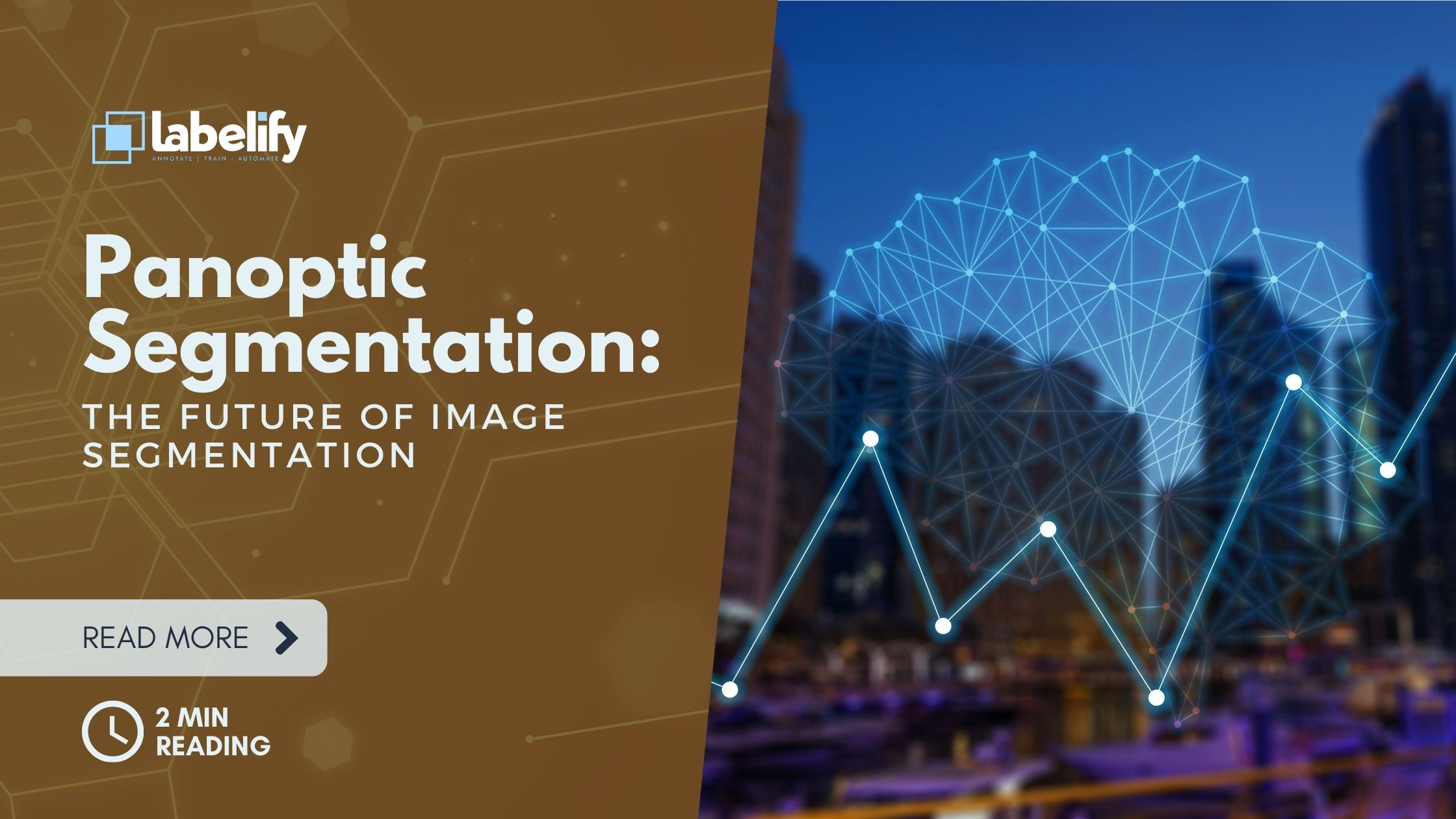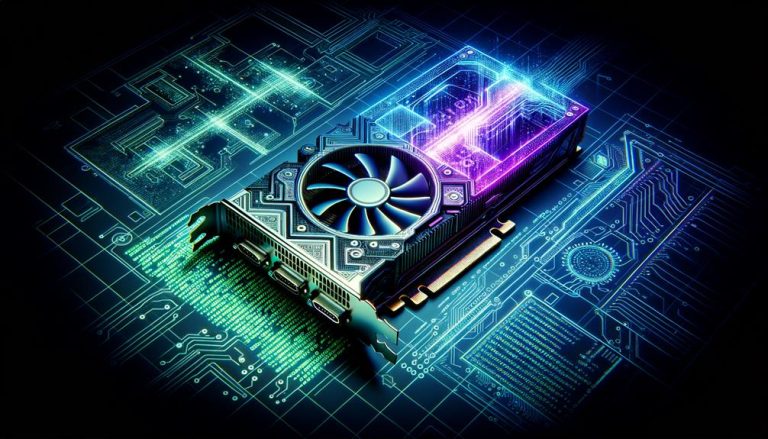Welcome to our article, where we're about to unveil a game-changing technology: Panoptic Segmentation.
This groundbreaking approach revolutionizes computer vision by simultaneously tackling instance and semantic segmentation challenges. It provides a comprehensive understanding of scenes, seamlessly combining the results of semantic and instance segmentation tasks.
We'll explore the inner workings of Panoptic Segmentation, including network architecture like FPN and Attention-guided unified network, and discuss the distinction between stuff and things.
Get ready to immerse yourself in this liberating world of visual data analysis and perception!
Points clés à retenir
- Panoptic segmentation solves both instance segmentation and semantic segmentation problems together.
- Panoptic segmentation segments and labels object instances in an image.
- Panoptic segmentation combines the results of semantic segmentation and instance segmentation tasks.
- Panoptic segmentation aims to detect and identify both stuff and things within a scene.
The Evolution of Panoptic Segmentation
The evolution of panoptic segmentation has transformed the field of computer vision. This revolutionary technique has overcome the challenges in panoptic segmentation and opened up exciting possibilities for the future.
Panoptic segmentation, which combines instance and semantic segmentation, provides a comprehensive understanding of a scene. It accurately segments and labels object instances, giving us a deeper insight into images.
The development of efficient network architectures, such as the Attention-guided unified network, has addressed the challenges of combining instance and semantic segmentation predictions. This breakthrough allows for simultaneous segmentation of foreground and background branches, resulting in improved accuracy.
The future applications of panoptic segmentation are vast, ranging from autonomous vehicles to augmented reality. With its ability to provide a holistic understanding of scenes, panoptic segmentation will liberate computer vision systems to perceive the world in a more intelligent and meaningful way.
Understanding Semantic and Instance Segmentation
Now let's delve into our understanding of semantic and instance segmentation.
Semantic segmentation assigns class labels to each pixel, providing a comprehensive classification of the entire image. It focuses on categorizing objects and covers all pixels.
On the other hand, instance segmentation aims to separate individual objects within the same class. It highlights objects as separate instances and labels them individually.
When combining semantic and instance segmentation, challenges arise in merging the results of both tasks. The main challenge lies in accurately distinguishing between different instances of the same class while maintaining semantic consistency. This requires developing innovative techniques that can handle the complexity of both segmentation tasks simultaneously.
Overcoming these challenges will revolutionize the field of computer vision and bring us closer to a more liberated understanding of visual data.
Unleashing the Power of Panoptic Segmentation
As we delve into the power of panoptic segmentation, we can utilize its revolutionary capabilities to unlock a new era in computer vision. Panoptic segmentation not only provides a comprehensive understanding of a given scene but also combines the results of semantic segmentation and instance segmentation tasks. This groundbreaking technique has the potential to revolutionize various real-world applications, from autonomous driving and robotics to surveillance systems and healthcare diagnostics.
However, as with any technological advancement, panoptic segmentation also comes with its own set of challenges and limitations. One of the main challenges is the computational complexity involved in processing large-scale images and videos in real-time. Additionally, accurately labeling each pixel with its corresponding class label and instance number can be a difficult task, especially in complex scenes with occlusions and overlapping objects.
Nevertheless, the potential benefits of panoptic segmentation can't be ignored. Its ability to provide a detailed understanding of a scene can greatly enhance the capabilities of computer vision systems, enabling them to make more informed decisions and perform complex tasks.
With further advancements and improvements, panoptic segmentation has the potential to revolutionize numerous industries and liberate us from the limitations of traditional segmentation techniques.
Bridging the Gap: Combining Semantic and Instance Segmentation
To bridge the gap between semantic and instance segmentation, we combine the results of both techniques. This integration is crucial for achieving a comprehensive understanding of a scene in computer vision.
Panoptic segmentation, which combines semantic and instance segmentation, plays a pivotal role in various real-world applications. By assigning class labels to each pixel and identifying individual instances, panoptic segmentation enables accurate representation of both stuff and things within a scene.
This breakthrough technology has the potential to revolutionize fields like autonomous driving, surveillance, and robotics. With panoptic segmentation, computer vision systems can better interpret complex visual information, leading to improved decision-making and enhanced situational awareness.
The integration of semantic and instance segmentation in panoptic segmentation brings us closer to unlocking the true potential of computer vision and its transformative impact on society.
Revolutionizing Object Recognition With Panoptic Segmentation
We are revolutionizing object recognition with panoptic segmentation. This groundbreaking technology is transforming the way we understand and analyze images.
Here's how we're doing it:
- Enhanced object detection: Panoptic segmentation allows for precise identification and labeling of objects in an image. It goes beyond traditional methods by not only recognizing objects but also providing detailed information about their instances.
- Comprehensive image analysis: With panoptic segmentation, we can gain a comprehensive understanding of a scene. It combines the results of semantic segmentation, which assigns class labels to each pixel, and instance segmentation, which highlights individual objects. This holistic approach provides rich and detailed insights into the content of an image.
- Liberating capabilities: By revolutionizing object recognition, panoptic segmentation liberates us from the limitations of traditional methods. It empowers us to accurately detect and analyze objects in complex and cluttered scenes, opening up new possibilities in fields such as autonomous vehicles, robotics, and augmented reality.
With panoptic segmentation, object detection and image analysis are reaching new heights, paving the way for a liberated future of visual understanding.
Panoptic Segmentation: The Key to Accurate Scene Understanding
With panoptic segmentation, our understanding of a scene is significantly enhanced by accurately segmenting and labeling both stuff and things within the image. This revolutionary technique holds immense potential for various industries.
In the field of autonomous driving, panoptic segmentation can aid in better scene understanding, enabling vehicles to navigate complex environments safely.
In healthcare, it can assist in medical image analysis, facilitating more accurate diagnoses and treatment plans.
Additionally, panoptic segmentation can revolutionize surveillance systems, enhancing security measures by accurately detecting and tracking objects in real-time.
However, implementing panoptic segmentation algorithms also poses challenges. The computational complexity and memory requirements of these algorithms can limit their real-world application. Furthermore, the lack of large-scale annotated datasets specific to panoptic segmentation hinders algorithm development.
Overcoming these limitations is crucial to unlock the full potential of panoptic segmentation and realize its transformative impact across industries.
Questions fréquemment posées
What Are the Challenges Faced in Combining Predictions of Instance and Semantic Segmentation Networks?
Combining predictions of instance and semantic segmentation networks presents challenges. We face the task of merging two distinct types of information: object instances and pixel-level semantic labels.
To overcome these challenges, solutions like the EfficientPS architecture have been developed. This architecture utilizes a shared backbone, Feature Pyramid Network, and separate heads to efficiently combine the results.
Additionally, attention-guided unified networks and improved attention sources have been employed to enhance accuracy in the final output.
Which Dataset Is Widely Used for Panoptic Segmentation Tasks?
The dataset widely used for panoptic segmentation tasks is the COCO dataset. It provides annotated images for training and evaluating panoptic segmentation algorithms.
This dataset is crucial for building and deploying successful panoptic segmentation systems. It allows researchers and developers to assess the performance of their algorithms using evaluation metrics specific to panoptic segmentation.
The COCO dataset has been instrumental in advancing the applications of panoptic segmentation and pushing the boundaries of computer vision technology.
What Is the Difference Between Stuff and Things in Panoptic Segmentation?
The difference between stuff and things in panoptic segmentation lies in the categories they represent. Stuff refers to texture and material-based objects, while things are countable objects with well-defined geometry.
Panoptic segmentation assigns each pixel a class label and an instance number, accurately representing both stuff and things in the output. However, it's important to acknowledge the limitations of panoptic segmentation in accurately distinguishing between these categories, as it relies on the quality of annotations and training data.
How Does the Efficientps Architecture Address the Challenges in Combining Instance and Semantic Segmentation Results?
The EfficientPS architecture is a groundbreaking solution that tackles the challenges of combining instance and semantic segmentation results.
By using a DeepLabV3 implementation, EfficientPS leverages a shared backbone, Feature Pyramid Network (FPN), and separate heads to optimize accuracy and efficiency.
It also introduces attention-guided unified networks, which segment foreground and background branches simultaneously.
This innovative approach improves the final output by incorporating attention sources within the network.
EfficientPS revolutionizes panoptic segmentation by addressing these challenges and pushing the boundaries of what's possible in computer vision.
How Does Panoptic Segmentation Differ From Semantic Segmentation and Instance Segmentation?
Panoptic segmentation differs from semantic segmentation and instance segmentation in its approach to understanding a scene. While semantic segmentation assigns class labels to each pixel and instance segmentation focuses on labeling individual objects, panoptic segmentation combines both, providing a comprehensive understanding of the scene.
This revolutionary technique has key applications in computer vision, allowing for accurate detection and identification of both stuff and things. However, it also has its pros and cons in real-world scenarios, which should be carefully considered for optimal implementation.
Conclusion
In conclusion, Panoptic Segmentation is a groundbreaking technology that has the potential to revolutionize computer vision.
By seamlessly combining semantic and instance segmentation, it provides a comprehensive understanding of scenes, allowing for accurate object recognition and labeling.
With its network architecture and attention-guided unified approach, Panoptic Segmentation is set to reshape the way we perceive and analyze visual data.
Get ready to embrace this game-changing technology and unlock new possibilities in the field of computer vision.




